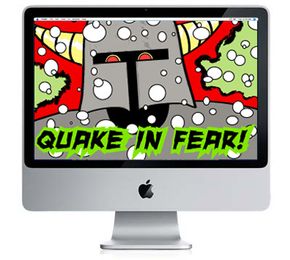The Web makes creating and accessing entertainment easier than ever. There are Web pages with video, music and animation that rival the production values of a theatrical film. But not all entertainers are going high-tech. Hundreds of artists are using the Web to create, display and promote an art form that's been around for decades: comics.
Unlike print comics, Web comics can be any size. Some Web comics are single-panel cartoons. Others are three- or four-panel comic strips that have the same structure as newspaper comics. Some artists work in a comic book format, releasing one page at a time to readers. A few cartoonists attempt to move beyond the constraints of the physical page into a medium they call the infinite canvas.
Advertisement
Comics and Comic Book Characters Image Gallery
The term "infinite canvas" refers to the potentially limitless size of a Web page. Readers navigate through an infinite canvas comic by scrolling up and down or left and right. An artist can present an entire storyline on one page instead of breaking it up into individual comic strips or pages. The Web page can be as big as the artist needs it to be.
Web cartoonists enjoy another luxury that most print artists don't have: No content restrictions. Most newspaper and magazine cartoonists work within strict content guidelines. Web cartoonists can make their own boundaries, or even ignore boundaries completely. Comics on the Web can be as surreal, gritty, philosophical or perverse as the creator likes.
In this article, we'll learn about the process of creating a Web comic. We'll also look at some of the tools and programs cartoonists use to publish comics on the Web. Additionally, we'll find out how some cartoonists are making a living off of their art.
But first, let's take a look at how an artist creates a Web comic on the next page.
Advertisement


